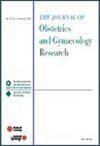Prevention of postoperative nausea and vomiting after cesarean delivery under neuraxial anesthesia and postpartum analgesia in Japan: A cross-sectional study
Abstract
Aims
This study aims to investigate the clinical practice of physicians working in obstetric setting toward postoperative nausea and vomiting (PONV) in parturients undergoing cesarean delivery (CD) with neuraxial anesthesia.
Methods
We conducted this online survey to all active members of the Japan Society of Obstetric Anesthesiology and Perinatology (JSOAP), where leads academic society in obstetric anesthesia in Japan. The questionnaire was developed using the Delphi method. The survey included questions about routine practices for PONV prevention, the use of neuraxial opioids, optimal practices, and perceived obstacles. The email sent three times every 2 weeks as a reminder.
Results
A total of 1046 e-mails were sent, and 307 JSOAP members responded to the survey (29.3%). More than half of responders (62.7%) used neuraxial opioids with intrathecal morphine being the most frequent. They had a higher rate of multimodal PONV prophylaxis compared with who did not use neuraxial opioids for postoperative analgesia (19.9% vs 6.7%). Metoclopramide was the commonest medication for PONV prevention, and there was a significant difference in the use of 5-hydroxytryptamine receptor antagonists (19.9% vs. 8.6%, p = 0.012). We observed that 80% of physicians reported the routine administration of prophylaxis for PONV for CD. Among these, 20% indicated the use of two or more agents. Conversely, in the cohort not administering neuraxial opioids, only 6.7% reported the use of two or more agents.
Conclusion
The online survey showed that the physicians using neuraxial opioids for CD had a higher proportion of multimodal PONV management involving two or more agents.

 求助内容:
求助内容: 应助结果提醒方式:
应助结果提醒方式:


